|
This is the seventh installment in a series of posts commemorating a very memorable journey. Thirty-five years ago, I paid a visit to American Samoa. At that time, it had been twenty years since I left there after spending one of the most unforgettable years of my life on the main island of Tutuila -- a year chronicled in my memoir Mango Rash: Coming of Age in the Land of Frangipani and Fanta (Behler Publications, 2019). In this series of posts, I'm sharing excerpts from my 1986 travel journal, along with photos from the trip. In the last installment, I traveled with former schoolmates Abe and Robin and another woman to the outer islands of the Manu'a group: Ta'u, Ofu, and Olosega. At the time, Abe was overseeing public works and power projects throughout American Samoa. Good things to know: fale - Samoan for house Soli & Mark's - a popular local restaurant fa'asamoa - literally, "the Samoan way." The traditional way of life in the Samoan culture palagi - white-skinned person, foreigner taupou - ceremonial hostess, an honorary position puletasi - traditional Samoan dress April 25, 1986 We're up at 6 am, watching a shell-colored sunrise, then having coffee and walking by the beach. We figure Abe has been up for hours inspecting more public works projects. Just before the plane is due in, we check his room and find him asleep -- he'd been up till 2 am, talking business. Back in Pago, I box up my stuff to send home (hiking boots, heavy sweater), lug it to the post office. Have more frustrating phone experiences. 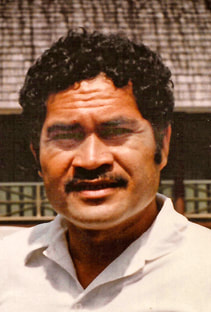 Abe Abe Abe comes by for lunch. In three hours, he's had two meetings with the governor; signed checks; had an explosive argument with the budget director, who is refusing to approve construction of a new administration building; plus several other things I don't remember. We go to lunch at Matai's Pizza Fale in Nu'uuli's shopping center. We talk about Abe's trip to Washington (leaving tomorrow morning). He lights up when I tell him I'll try to get him a picture of Lee Iacocca. He starts telling me about the house he's building near the airport, and he gets that kind of explosive glow again. "Oh!! Do you want to drive by it?" We do -- he's having it built by a contractor from Texas -- more expensive, but good work, he says. He's building it for his parents' retirement. This afternoon I wandered around, took pictures, bought more shirts, miscellaneous Samoan stuff. 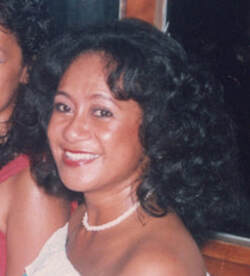 Fatima Fatima Fatima took me down to Pago, where I looked for Tau at his insurance office, but didn't find him. 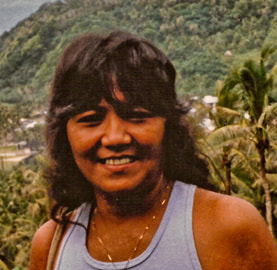 Jeanette Jeanette Then we met Jeanette at Soli & Mark's. She and a friend were having an interesting conversation about fa'asamoa, saying that no matter how long you spend off the island, "no matter how palagi you think you are," you always have to deal with Samoan customs. It's more a part of you than you realize. Jeanette is caught up in it now because of the funeral for her cousin (Ray Nomura's son), who drowned off Aunu'u. The other woman is into it because her father is taking over the high chief title on Ta'u. There, fa'asamoa is really fa'asamoa. In the kava ceremony, she won't be able to get near where her father is, for example; no picture-taking. And their lives will be different -- she can't sit in her father's chair, lie on his bed, or eat his food. Tonight, Jeanette, Mai, and I sat around in the bar at the Rainmaker, drinking. It was a good time. Then as we were going through the lobby, we saw that they were showing the Miss Flag Day competition on TV. We came in as they were having the kava ceremony competition -- the taupous doing the kava preparation, flinging the kava strands back over their shoulders. Then we saw the puletasi competition -- some of the women barefoot, shell decorations and jewelry. To be continued . . .
6 Comments
This is the sixth installment in a series of posts commemorating a very memorable journey. Thirty-five years ago, I paid a visit to American Samoa. At that time, it had been twenty years since I left there after spending one of the most unforgettable years of my life on the main island of Tutuila -- a year chronicled in my memoir Mango Rash: Coming of Age in the Land of Frangipani and Fanta (Behler Publications, 2019). In this series of posts, I'm sharing excerpts from my 1986 travel journal, along with photos from the trip. In the previous installment, my Samoana high school friend Abe invited several of us classmates to come with him on a trip to the outer islands of the Manu'a group: Ta'u, Ofu, and Olosega. At the time, Abe was overseeing public works and power projects throughout American Samoa. Four of us made the trip: Abe, classmate Robin, another American woman named Karen, and I. April 24, 1986 This morning the weather looks awful. Last night it was storming -- high seas, boulders across the road, fallen trees. Today the skies are gray, foreboding. But I don't want to disappoint Abe, so I go to Manu'a. We fly in a tiny plane -- twelve passengers. From Pago airport, it's 30 minutes to the dirt landing strip at Ta'u. The strip there is a swath cut through banana trees; taro grows within yards. There's no terminal, simply "Welcome to Ta'u," from the pilot. Then we buzz back into the sky, and in five minutes we're in Ofu. I was dreading the landing there, but to my surprise there's a new concrete runway and the landing is perfect. The runway is one of Abe's public works projects. We're met by John, a Samoan wearing an L.A. Raiders cap. He has lived in San Francisco, speaks with an American accent. He's been in charge of a project to build a road to a peak on the island for a TV tower. Abe sees a street light on that should be off -- the photo cell isn't working. On the way back to the motel, he's counting how many are defective. 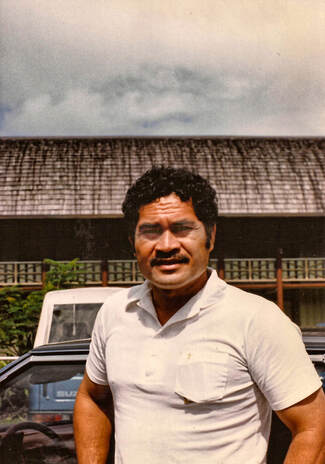 Abe Abe John takes us for a ride around the island, and we see Abe in action, pointing out to John areas of the road that need to be improved. He asks John how far from the top the road is now. John says, "About 200 yards." Abe says, "That's what you told me a month ago." 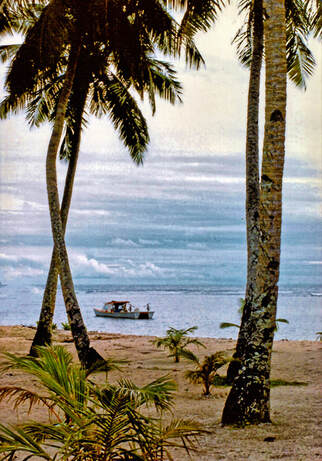 Ofu scenery Ofu scenery The rest of us are enjoying the sights, sitting in the back of the pickup. There is white sand everywhere--even people's front yards are covered with it. The houses are clean, painted sweet pastel colors. The water is turquoise and sparkling, with live coral. Abe says the drinking water is very pure. (It comes from underground springs). Only about 1,000 people live on the two islands, Ofu and Olosega, that are connected by a bridge Robin says cost $1,000,000. The people of Manu'a are wealthy, I hear it said by several people. They have very little to spend money on, so they save everything. Their taro is considered the best. It's whiter, not as sticky, almost a fluffy texture like heavy bread. Abe checks the power plant, and Robin, Karen and I walk around the dock area and along the road, down by the little cafe. Karen tells us bizarre stories about her life. We get back to the plant; Abe is taking a nap on a mat on a bed. John drives us back to the motel. On the way we meet another of Abe's employees, who is bringing us boxes of food: pork, chicken, taro, palusami, and what Robin calls chow mein--cellophane noodles mixed with corned beef. After dinner, Robin and Karen watch TV and talk about Karen's problems, and Abe and I sit on the beach talking for a long time. He says he envies Bill for his stable family life. (Bill envies Abe for his seriousness and studious nature.) 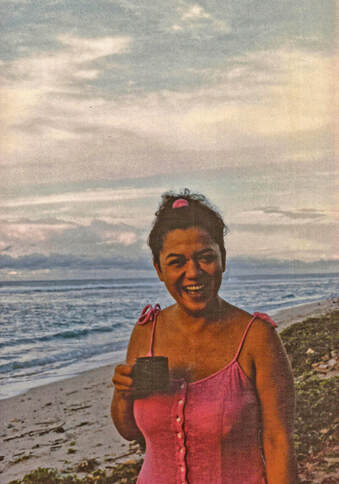 Robin Robin When it starts raining, we go inside and make coffee and sit around and talk some more. Karen falls asleep, and Abe, Robin, and I talk about our compulsiveness at work -- how we all avoid personal relationships if they interfere with our work. It strkes me as very ironic that we're all on this serene, relaxing island, miles from our responsibilities, but we end up talking about work. Robin and Abe: the Samoan yuppies. 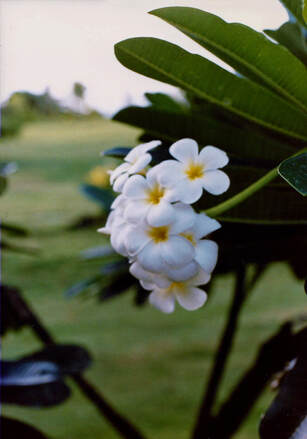 Frangipani Frangipani About 11:00, we go to our rooms. I sit outside watching the clouds in the dark sky, listening to the ocean, smelling the frangipani blossoms. We would have slept soundly, but we were dumb enough to leave the door open, and mosquitoes were all over us. I had to keep the sheet completely over me -- face and all -- to keep from getting bitten about once a second. To be continued . . .
This is the fifth installment in a series of posts commemorating a very memorable journey. Thirty-five years ago, I paid a visit to American Samoa. At that time, it had been twenty years since I left there after spending one of the most unforgettable years of my life on the main island of Tutuila -- a year chronicled in my memoir Mango Rash: Coming of Age in the Land of Frangipani and Fanta (Behler Publications, 2019). In this series of posts, I'm sharing excerpts from my 1986 travel journal, along with photos from the trip. April 21 - Connecting with friends The days are so full I can't begin to record everything. Today I began to feel comfortable here -- like I used to.
Pili and I drove around the west end of the island and over to the north shore. Fantastic scenery -- blue water, dense jungle, white beaches -- Samoa at its best. Met his friends Tui and Donna (Tui is Sualua's younger brother) and the Baptist missionary from Eureka, California. Pili dropped me off at Jeannette's, where I had dinner with her and Gordon and their family (3 kids). Padilla and his wife stopped by. Jeannette and I went back to the hotel; had coffee and a good talk. [Several paragraphs of personal details from that conversation omitted for privacy.] After coffee, we went up to the bar, where Fatima and Pat Galea'i and some other people were drinking -- sat with them for a couple of hours. Had a good time, but they were getting rowdy. I'm glad I found Jeannette, though. She's very intelligent, thoughful, concerned with world affairs. Tomorrow we're going to go for a drive on the east end of the island; also to find some more people -- Fipa [Fibber], Robin, and others. April 23 - Stormy weather One of those highs-and-lows days. Right now I'm in my room with a fierce tropical storm raging outside. I can hear the wind whistling outside -- palm trees blowing all around. Power just went out. April 24 - Continued connections Had to stop writing last night because the power went out again. Really bad storm last night. [What follows are further details from April 23.] 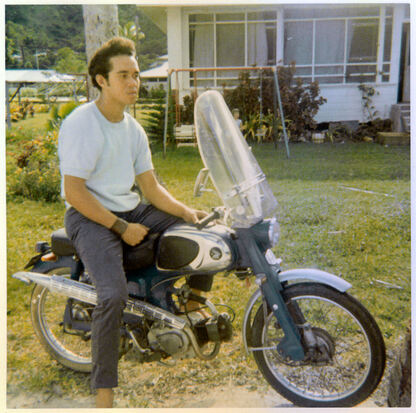 Fipa (Fibber) in 1966. I regret not taking photos of him in 1986. Fipa (Fibber) in 1966. I regret not taking photos of him in 1986. Jeannette and I met for lunch at the airport. I bought some stuff from her friend's shop there. Then we went to see Fipa, who is a mechanic for the Department of Transportation. Fipa looks much the same. No front teeth, less hair, but still the same Fipa. Tonight we all met for dinner at Soli & Mark's: Pili, Robin Annesley, Jeannette, Padilla and Teuilla (his wife), Fipa, Fatima, Abe Malae and I. It was a great time. I sat between Abe and Pili most of the time. Abe told us how he got into Motown music. Now he has just about everything ever recorded, plus lots of other stuff from that era. He asked Pili and me what other records he should order from the Columbia record club. He also told me that Lee Iacocca is his personal hero. 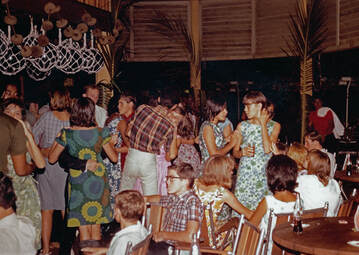 My 17th birthday party in 1966, approved by Abe My 17th birthday party in 1966, approved by Abe It's funny the things people remember. Abe remembered that I was from Stillwater, Oklahoma. He also remembered the party invitations for my birthday, and that I asked him if he thought it was OK for me to have a party when I was running for student council vice president. I used to confide in Abe a lot. Fipa remembered me telling him I was going back to the States for cancer treatment. He says we had this conversation up on Mt. Alava. I don't remember it. Pili is embarrassed about being a goof-off in high school. But we all thought he was very personable. We envied him for that. Abe decides we should all go to Manu'a with him tomorrow (Thursday). He has to go over to inspect public works projects. He gets so excited -- he really lights up talking about it. Pili, Robin, Jeannette and I say tentatively that we'll go. To be continued . . .
|
Written from the heart,
from the heart of the woods Read the introduction to HeartWood here.
Available now!Author
Nan Sanders Pokerwinski, a former journalist, writes memoir and personal essays, makes collages and likes to play outside. She lives in West Michigan with her husband, Ray. Archives
April 2022
Categories
All
|
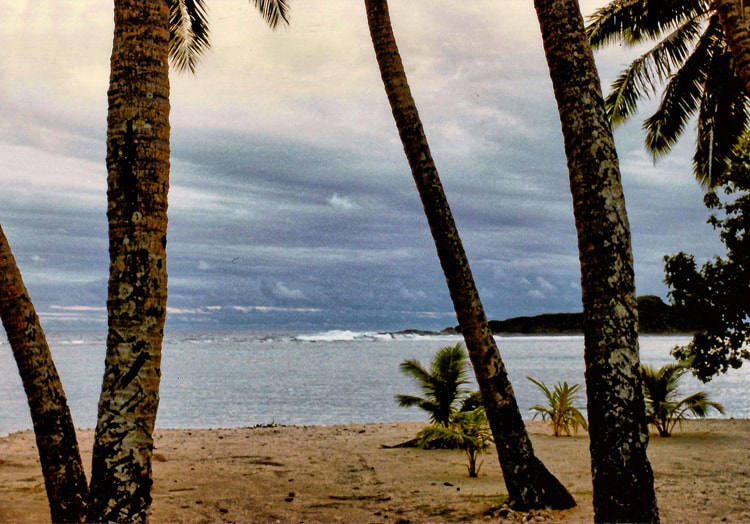
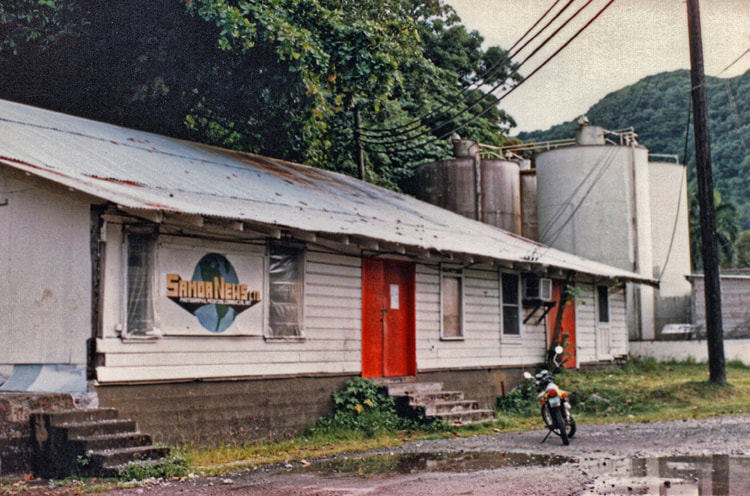
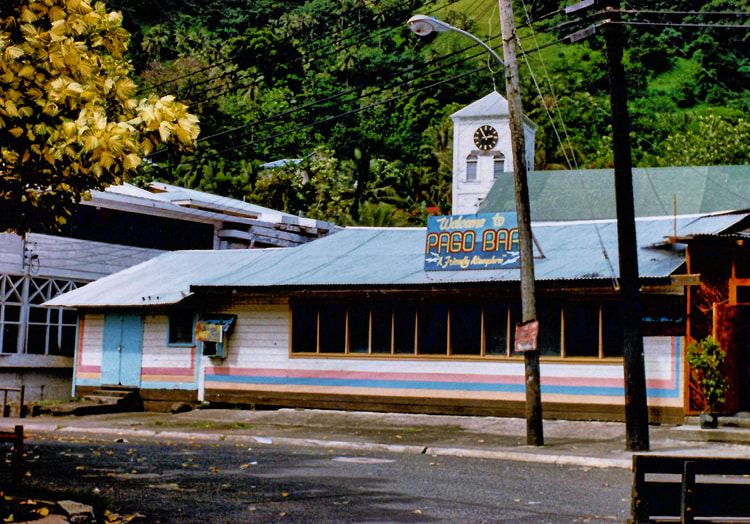
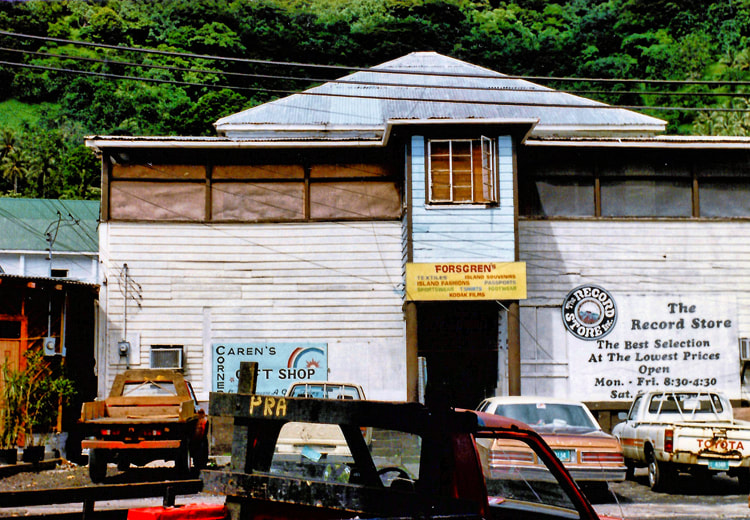
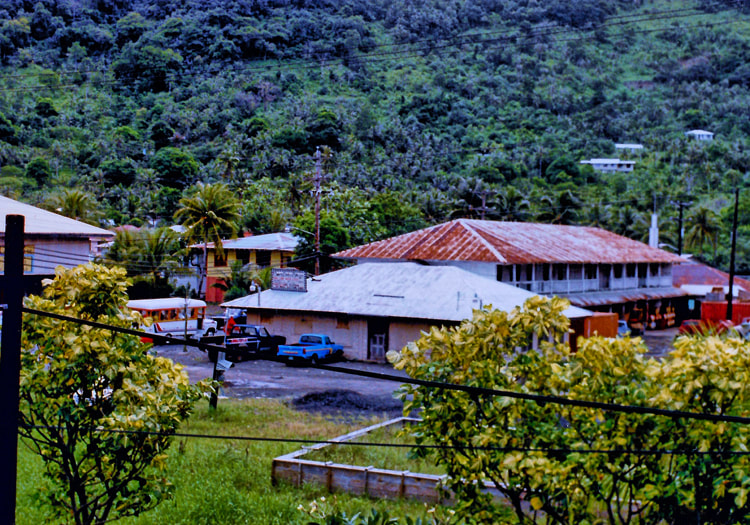
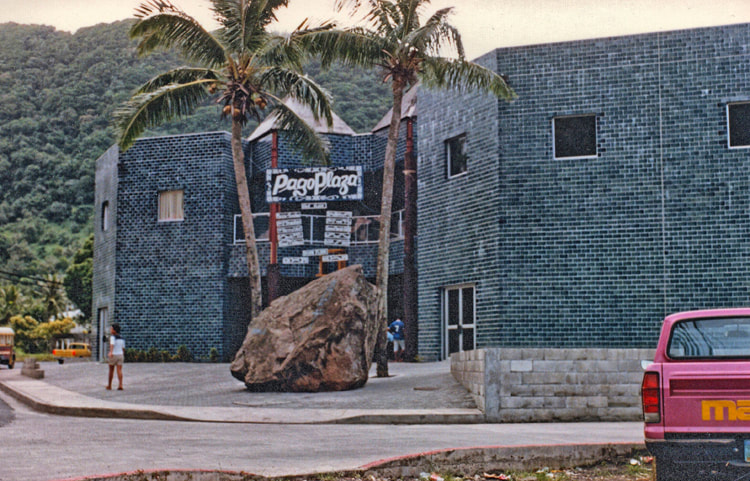
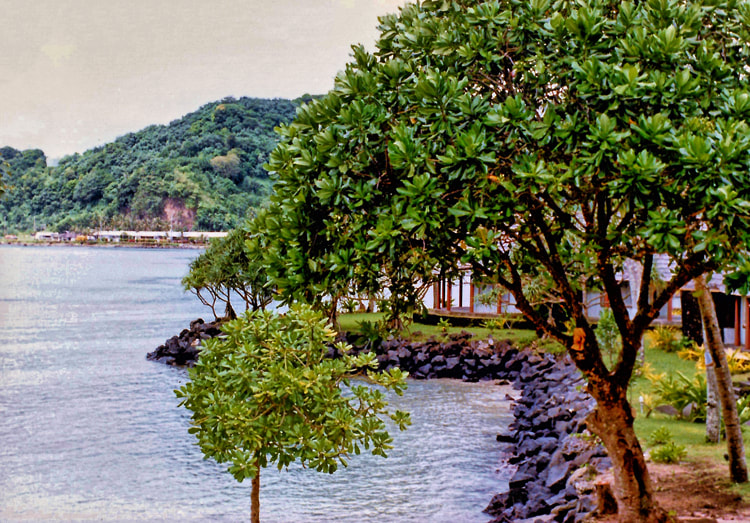
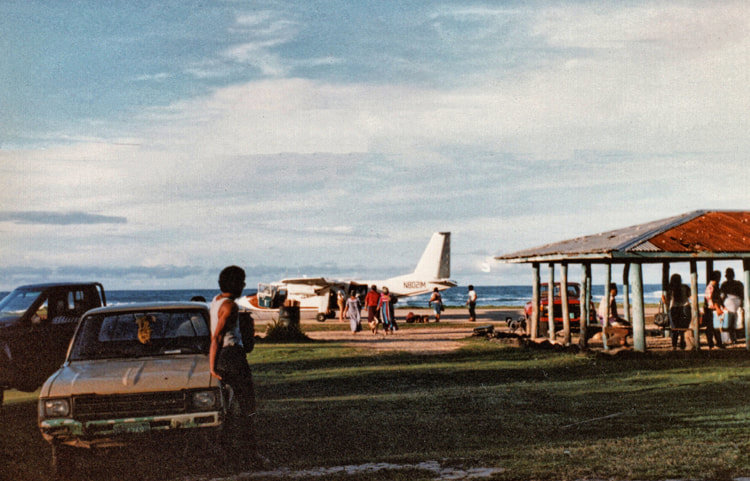
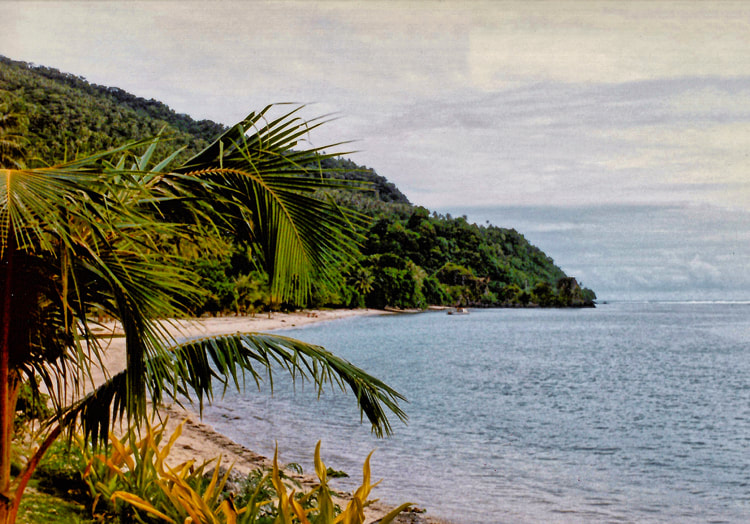
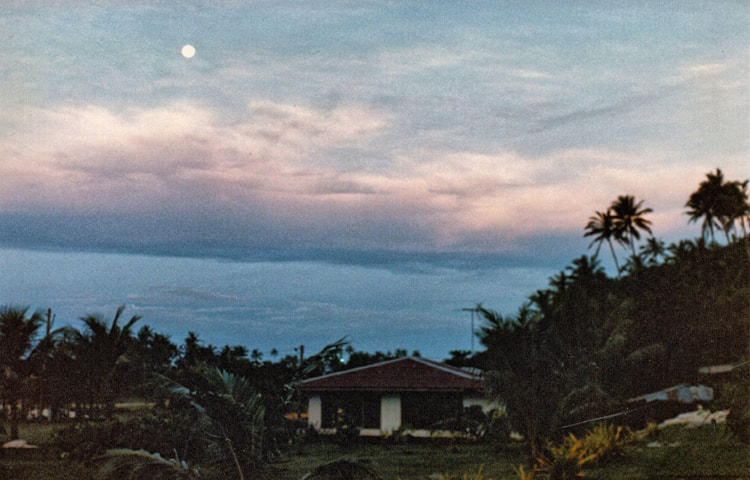
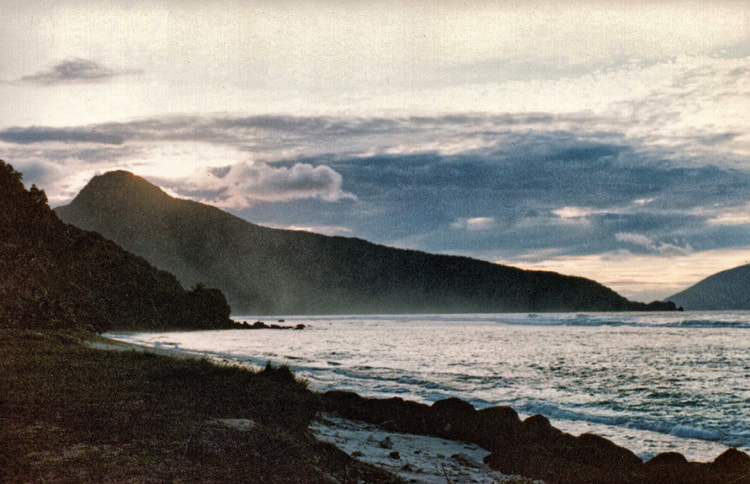
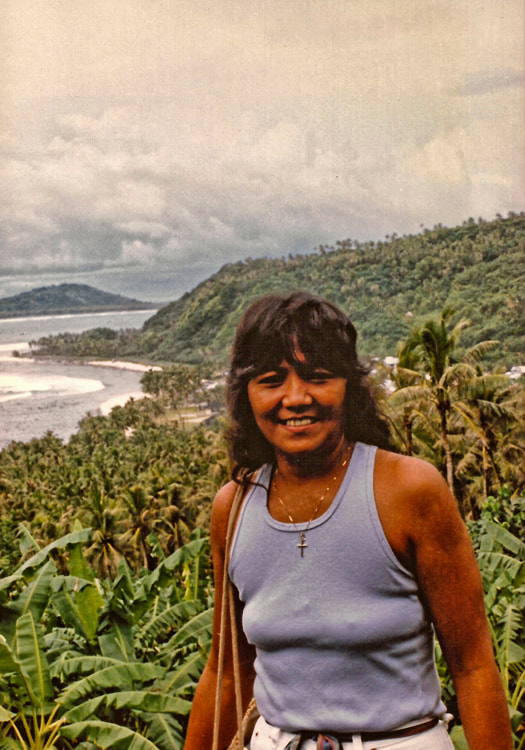
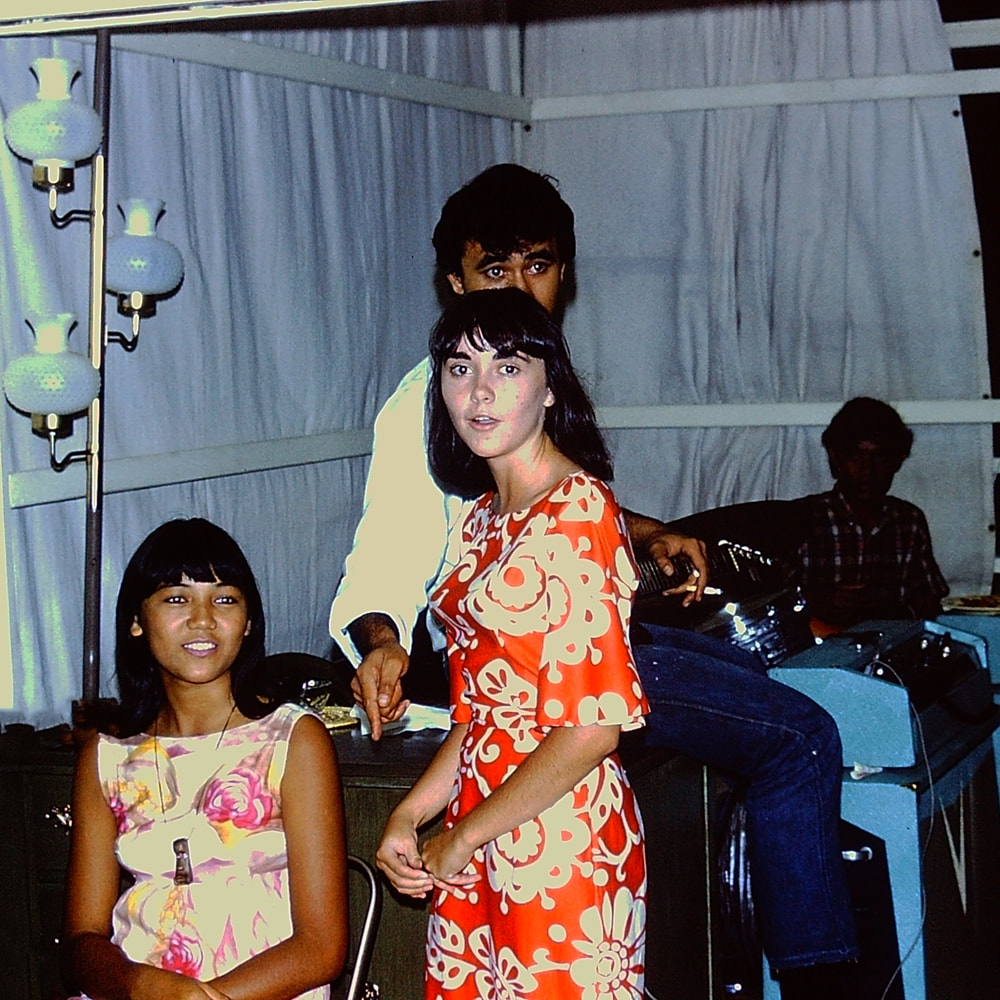
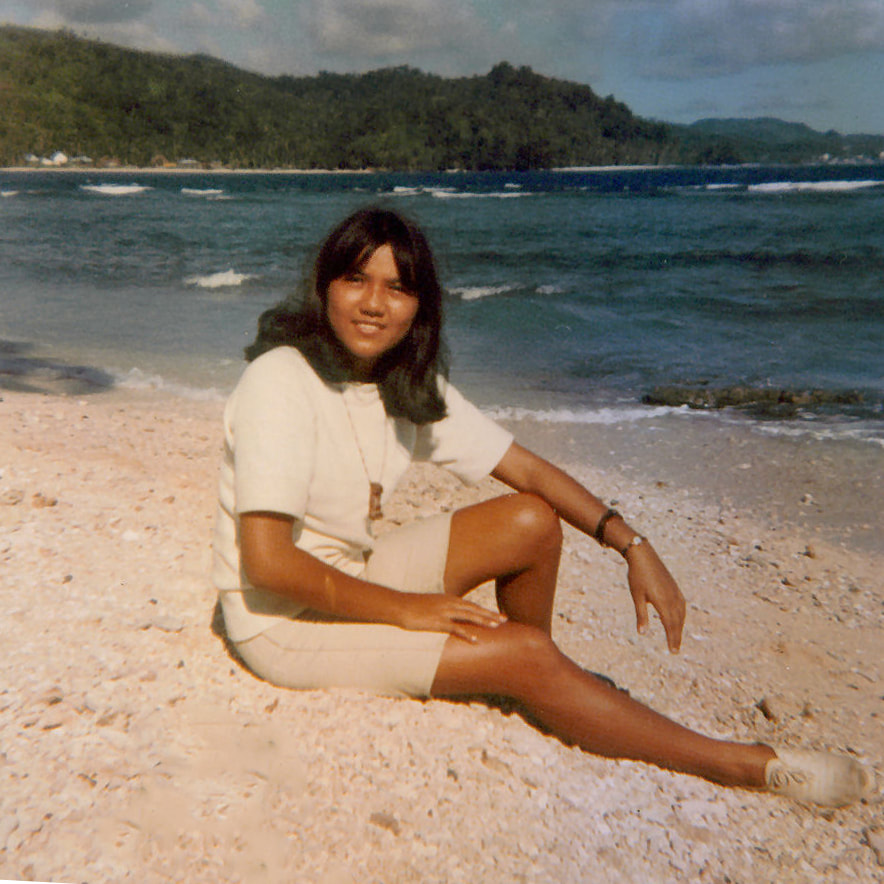
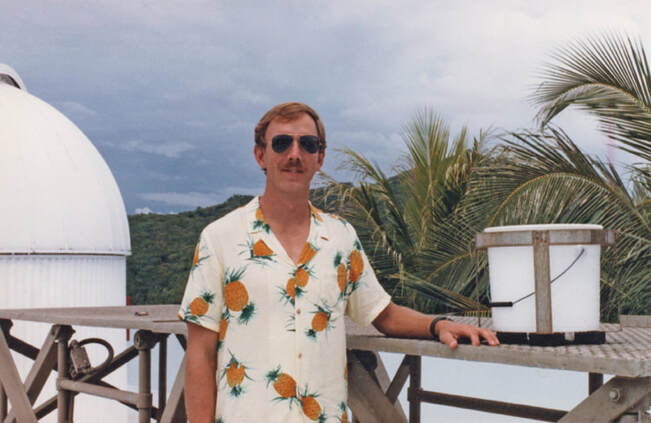
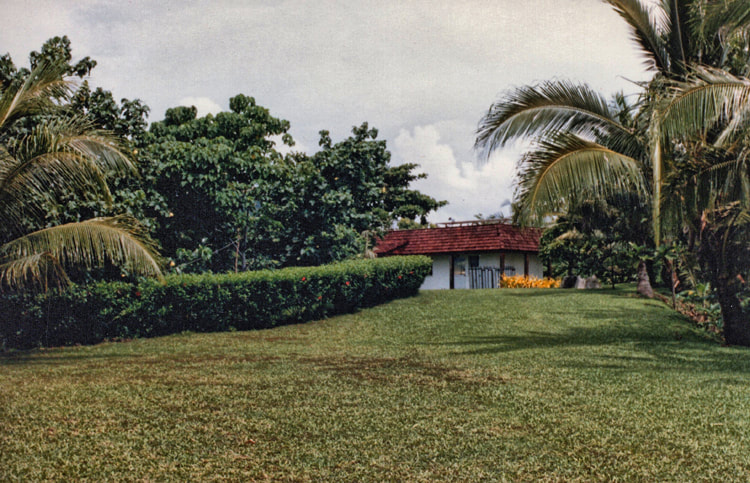
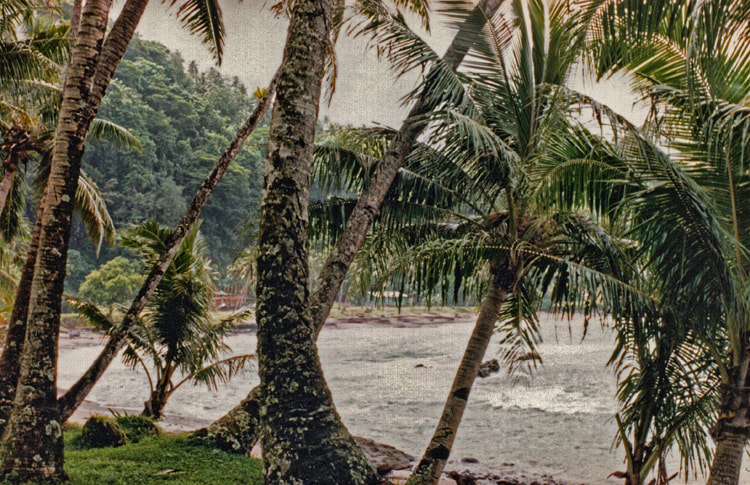

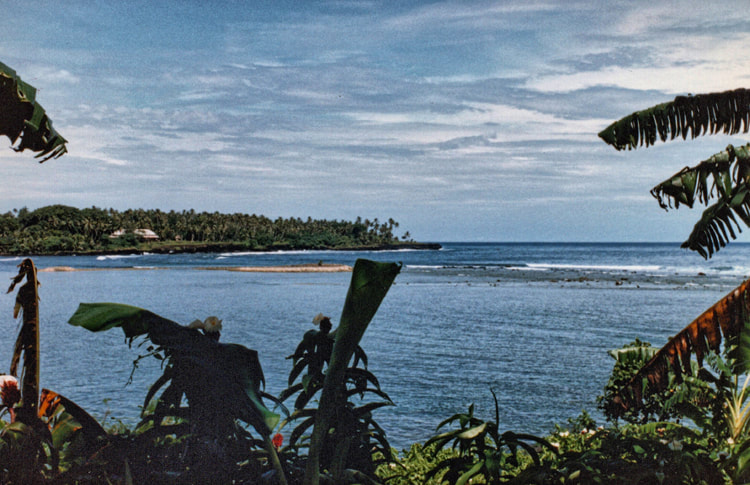
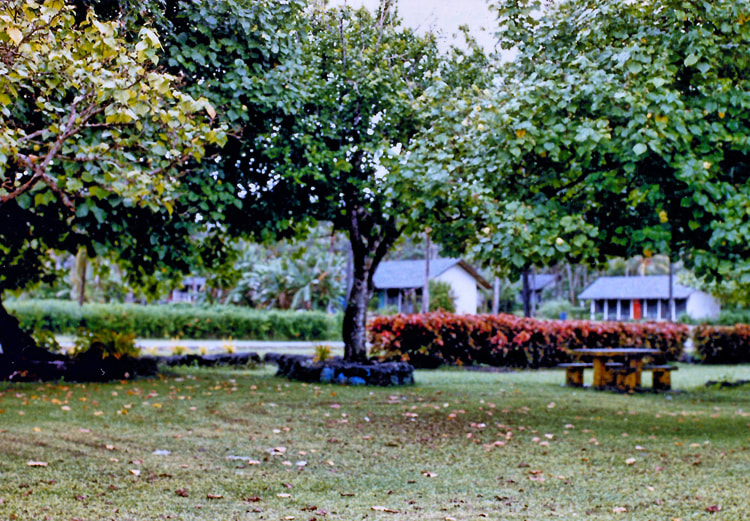
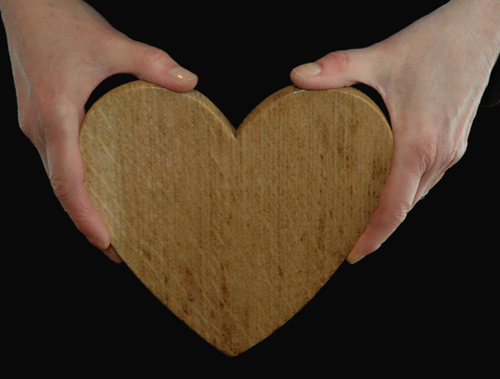
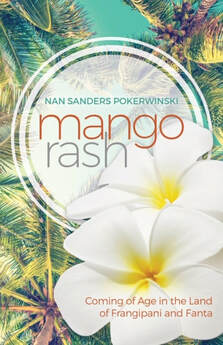
 RSS Feed
RSS Feed